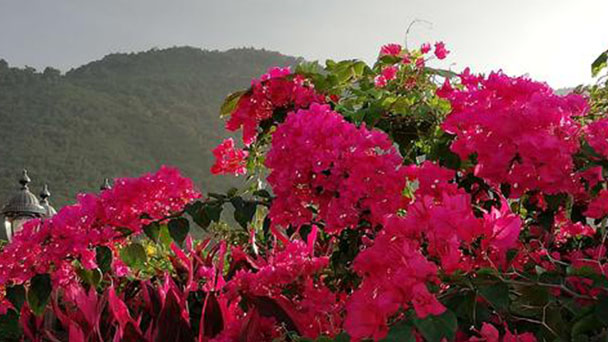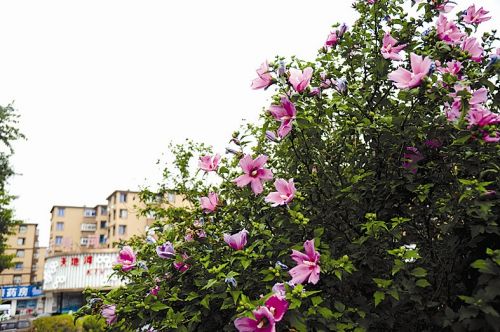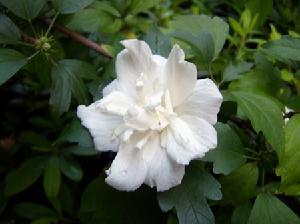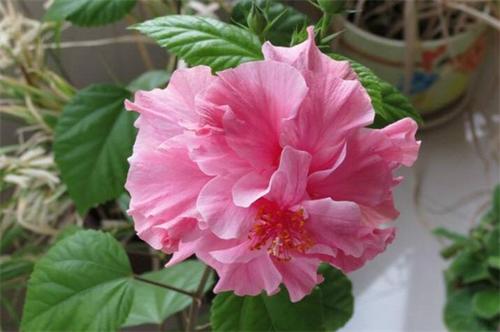How to take care of Rose of Sharon
Written by Maggie
Jan 18 2021

Many florists keep Rose of Sharon in their homes to beautify the environment. However, many people do not know how to care for Rose of Sharon. If you want to grow a lush Rose of Sharon, you must ensure the preparation of pot soil, summer management, autumn management. As well as water and fertilizer management, peeling, appropriate temperature and light, and other methods. We should also pay attention to the treatment of pests and diseases. If improper, it is difficult to plant a beautiful Rose of Sharon. Now, let's see the Rose of Sharon care.

1. Basin soil care
If you want to know how to care for the Rose of Sharon, you must ensure the quality of the pot soil. Since Rose of Sharon is a hardy plant, it is suitable to grow in cool and light conditions. First of all, soil quality is the key. When it comes to autumn and winter, you can use forest soil, manure, lime powder and so on in a 3:1:1 ratio or modulation, and ensure the permeability of the flowerpot, and add an appropriate amount of water, be sure not to overdo it.
2. Summer care
By the middle of May, the seedlings can be removed and planted in a pot of soil with a certain amount of fertilizer, and poured with a proper amount of water and soil treatment. In late June, the heart was picked according to the order of flowering varieties, and all the hearts were picked in 20 days. And there is a top treatment, can retain a dozen leaves, promote the speed of root development.
3. Water and fertilizer care
Because Rose of Sharon is a very common wild plant, you can fatten it up once a week during the seedling period, but don't let the pot water up. When the buds appear, it is necessary to control the number of waterings. In the beginning of autumn, to properly control the water, about two days to water once. In the spring and summer season, keep once a day, spray fertilizer 7 to 10 days with a small amount of phosphate and potassium fertilizer.
4. Autumn care
The old plants after the pot should be cut off, wait for 2 days to add new nutrient soil, and keep the inside loose and dry.When the new flower buds appear, and then fill a nutrient soil, mainly with forest soil, rural soil and dung in a 2:1:1 mixture of mixing and adding. When the plant grows to 20cm, begin to spray urea solution to the leaves, about once every 3 days, to promote the growth and development of stem and bud.

5. Stripping buds care
By the time the buds appear in the Rose of Sharon seedling, the lateral and axillary buds can be removed, but the main buds should be retained to promote effective absorption by the roots. Ensure that the main bud of the plant is not damaged, and then placed in the conditions of sufficient sunlight, but not for a long time exposure, otherwise the phenomenon of root rot, when the bud formed and then add a little potassium dihydrogen phosphate solution every 7 days to spray once.
6. Temperature and light care
Because the Rose of Sharon is a very hardy plant, like sunny places, it is best to grow in a 10 to 25 ℃ environment. Sunshine and temperature is one of the important conditions. If Rose of Sharon grows less than 5 hours of sunshine, Rose of Sharon bud differentiation phenomenon will occur, so it's best to keep supplies abundant sunshine. Every day to promote the growth of shoots.
6. Rose of Sharon care for pests and diseases
Chrysanthemum aphid
Chrysanthemum aphids (Chrysanthemum aphids), one of the most common pests and diseases of chrysanthemum, occur from the development period to the growth period. It mainly secretes mucus and sticks the leaves together, making the leaves unable to carry out normal photosynthesis, resulting in curly leaves, yellow leaves and other phenomena. The best way to do this is to separate the plants from the topsoil and bury the carbofuran particles inside
Inulin mites
During the flowering period of chrysanthemum, the occurrence frequency of Ternifolia inulinus is high, which is mainly manifested by wind transmission, pollution of roots and growth of stems by watering, resulting in brown leaves, slowly turning yellow and withering. The best method is to spray 0.2% urea solution on the affected area, and when mites are found, spray with a small amount of dichlorophenol solution.
Conclusion: Through the above introduction, we can understand the caring skills of Rose of Sharon. Cultivating a lush and good-looking chrysanthemum also needs careful cultivation. I believe that as long as you master the above points, you can plant a more perfect Rose of Sharon.

Latest Updated
- Benefits of Bugleweed - 7 Science-backed Health Benefits
- Bugleweed Dangers & Side Effects - Is It Poisonous?
- How to Plant Evergreen Trees - What You Should Know
- When to Plant Evergreens - Grow Guide for Evergreen Trees
- 12 Wonderful Evergreen Shrubs for Your Garden
- 12 Popular Evergreen Plants with Pictures for Beginners
- When And How To Prune A Lilac Bush Like a Pro
- How to Grow & Care for Lilac Vine (Hardenbergia Violacea)
- Japanese Lilac Tree (Syringa Reticulata) Care & Propagation Guide
- Shumard Oak Pros and Cons - What to Know
Popular Articles
- Winter maintenance of Antirrhinum Majus
- How to Grow Terminalia Mantaly Tree
- How to Grow and Care for Crossostephium Chinense
- How to grow Antirrhinum Majus in spring
- Peristeria Elata (Dove Orchid) Profile: Info & Care Guide
- Underwatered Snake Plant (Sansevieria Trifasciata) - Signs And How To Fix
- How to Care for Brazilian Jasmine Plant (Mandevilla Sanderi)
- How to Grow & Care for Graptopetalum Purple Delight in Summer
- Rosa Chinensis (China Rose): Plant Growing & Care Tips
- How to Care for Baby Sun Rose (Aptenia Cordifolia)